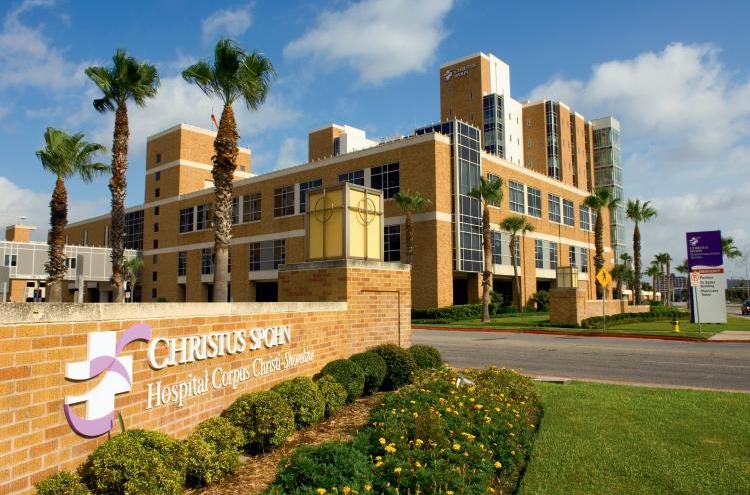By Edmond Ortiz
[dropcap size=small]D[/dropcap]r. Melissa Y. Macias knew, from age 5, that all she wanted to do was become a doctor. She recalls her mother taking her and her siblings to their pediatrician. Melissa had taken her Raggedy Ann doll with her into the doctor’s office.Melissa, seeming a bit sad, asked if anything was the matter. She replied that her doll had lost her eye and was “sick.” “The eye button came off,” she explained, as she showed the black four-holed button to her beloved pediatrician.
Surveying the situation, he commanded “emergency surgery” was needed for the doll; and he left the room with his nurse, doll in hand. Upon return to the room, he presented a restored Raggedy Ann, as he had stitched up the eye button and even placed a eye patch over the treated eye, making the doll good as new.
“It was an amazing moment. I was enthralled and captivated. Medicine became my passion, “ she explains.
Dr. Macias has travelled an unconventional route to her neurosurgical career. She graduated, magna cum laude, from the University of Texas at El Paso in 1990 with a bachelor’s degree in biology and chemistry before pursuing a doctorate in cellular biology and neuroanatomy at the Medical College of Wisconsin.
“It’s exciting to be back and part of this wonderful community, and to help empower patients so they can make informed decisions.”
Upon the El Paso native’s graduation there, she started medical school at the same Medical College, with a focus on becoming a neurosurgeon.
Dr. Macias has returned home to Texas, to practice at the South Texas Brain and Spine Center in Corpus Christi. She previously practiced there, 2009 through 2012.
Along the way, as some people would describe it, life happened. During her collegiate career, Macias returned to her native El Paso to help care for her younger sister after their mother succumbed to cancer. Still, Macias continued to achieve academically, with other collegiate and professional opportunities, she followed a path that included working for NASA.
She participated in three space shuttle missions as part of her PhD research, investigating how leaving and re-entering the Earth’s gravitational field affects muscles and nerves.
So, where exactly did that professional focus on the brain and spine come? Her doctorate advisor in Wisconsin worked in biosciences for NASA as a principal investigator with a focus in the neurobiology. It piqued her curiosity.
“This exposed me to neurosciences —more specifically the human nervous system, which I found the study thereof to be the most challenging and rewarding of all fields” Dr. Macias says.
Investigating with NASA, Dr. Macias relished the exploration of anti-gravity’s impact on muscles and on the central nervous system. She was interested in topics far beyong the applications of this research on future space travel.
Such research can help physicians to better understand how muscles and nerves cope when someone is bed-ridden from prolonged illness or injury as well as those that are immobile from some form of paralysis.
Dr. Macias never looked back after observing her first neurosurgical surgery, where the brain was exposed. She knew this is where she belonged.
“I enjoy the challenges. This is the hardest, more competitive (medical) field to get into,” she adds. “It’s the longest residency. I’ve never taken the easy road.”
During her educational career, Dr. Macias has received numerous scholarships, research grants, and graduate level fellowships, including an invitation to the annual International Symposium on Neural Regeneration in 1996 and again in 2005.
During her residency at the Medical College of Wisconsin, Dr. Macias continued her academic interests in studying applications of stem cell treatments in the injured spinal cord, where she received grant funding for this research. Further, in-folded within her residency was 12-month period concentrated on comprehensive surgical management of spinal diseases.
She has written and published many abstracts and research articles in peer-reviewed journals . She has also presented her work in many national meetings of neurosurgery and spine societies. Her focus of these endeavors remains on treatments and approaches toward comprehensive and complex spine pathologies.
Dr. Macias formally launched her neurosurgical career at the South Texas Brain and Spine Center in 2009.
She left the Brain and Spine Institute at the end of 2012 and spent two years as a neurosurgeon with the Illinois-based SwedishAmerican Medical Group. She followed that with a practice at Milwaukee-based Aurora Neuroscience Innovation Institute, beginning in 2015.
“This exposed me to neurosciences –more specifically the human nervous system, which I found the study thereof to be the most challenging and rewarding of all fields” Dr. Macias says.
While she has family and friends in Wisconsin, a chance to practice in Texas again was irresistible to Dr Macias. She is excited about her return to Coastal Bend. She calls the Brain and Spine Center an ideal place to apply compassionate care in helping patients address afflictions related to the brain or spine.
When asked what is at the core of her practice principles , she replies without pause, “It’s compassion for other people who are going through difficulties,” Dr. Macias explains.
“I want to always apply simple human kindness to patients and their families as the navigate through their disease or problem. I take an individual approach in patient care very seriously, as each patient is unique in their concerns and problems. My goal is to partner with them so that they may achieve the quality of life they seek; or in case of emergent surgeries, I aim to be present to the patient and their family as they navigate a difficult and often frightening situation.”
Dr. Macias joins Drs. Mathew Alexander, P. Langhman Gleason and Howard Smith in practice at the South Texas Brain and Spine Center.
Now with more than 25 years of education and clinical experience under her belt, Dr. Macias treats the full range of spinal diseases and disorders: from disc herniations and spinal stenosis to complex degenerative conditions such as acquired adult scoliosis, basilar invagination as well as trauma, infections and tumors of the brain and spine.
While the human spine is subject to an array of movements, it can be debilitating when the spine is not at 100 percent. Mobility of one’s head or limbs can be seriously affected by some disease or disorder.
“Education is another core principle,” says Dr. Macias. “I believe patients should know and understand their medical condition and I make a concerted effort to always review films and thoroughly discuss with each patient their disease pathology and all treatment options—non-surgical and surgical. I believe it is our duty as physicians to educate our patients, anything less is a disservice”
Neck and back pain take a toll on worker health and productivity. In 2013, the Integrated Benefits Institute (IBI) found that nearly one in four people at work experience low-back pain. As a result, employers paid up $51,400 year per 100 employees in lost productivity and medical treatments.
Low-back pain has led to lost work time and underperformance at work, costing employers $34,600 per 100 workers, according to the same 2013 IBI study.
Degenerative spine disease is becoming more and more of a common diagnosis, a natural result of the overall population getting older.
“It’s commonly referred to as arthritis of the spine,” Dr. Macias said of degenerative spine disease, which can be compounded by one’s lifestyle, such as obesity or smoking, or by genetics.
Dr. Macias and her colleagues use a broad spectrum of techniques in treating spine conditions including minimally destructive methods, but also seek out ways to prevent surgery – to make it a last resort treatment.
“In chronic degenerative disease surgery is really the last thing we want to do. It’s often the option after therapy and pain management have failed,” Dr. Macias adds.
In surgeries requiring bone fusion, Dr. Macias uses adult stem cell technology where appropriate to optimize success of the fusion which translates to a successful outcome for the patient.
“Regenerative medicine is one of my interests. It’s something that I’m fascinated by,” she adds. Dr. Macias has expressed enthusiasm for working again along the Coastal Bend.
“I enjoy the challenges. This is the hardest, more competitive (medical) field to get into,” she adds. “It’s the longest residency. I’ve never taken the easy road.”
“It’s exciting to be back and part of this wonderful community, and to help empower patients so they can make informed decisions.”
She looks forward to spending many more years in neurosurgery. “The breadth of neurosurgical complexity in the spine and brain remains challenging and exciting,” she adds.
Reflecting upon her professional journey, she has learned many things about being part of a medical group.
“There’s a lot to be said about being in a practice with partners you trust and where you are valued,” she says, then with a smile she adds, “let’s just say I’m home again.”
To find out more information about Dr. Melissa Macias and her practice, visit their website at southtexasbrainandspinecenter.com or contact there office at 361.883.4323








Recent Comments